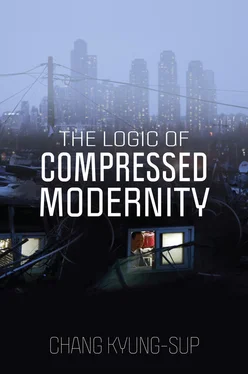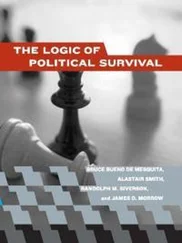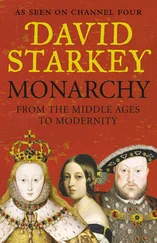Secondary organizations Secondary organizations such as schools and business firms have been hastily set up in massive numbers as instruments for modernization and development, but their organizational structure and culture are far from simple replication of those of Western societies. Traditional teacher–pupil relations still reverberate in authoritarian class rooms where cramming (condensed absorption) of modern/Western knowledge and technology is considered as an uncompromisable goal of education in the process of national economic and civilizational catch-up (Han, J. 1996). In South Korean sweatshop factories where the “economic miracle” was initiated from the late 1960s, work-line supervisors and company managers demanded that yeogong (women industrial workers) subserviently yet faithfully serve them as if they were elder kinsmen in a village (Koo, H. 2001). Modern industrial workplaces have often been reinvented as arenas for arguably communal interactions associated with paternalistic cultural traditions (Dore 1973; Walder 1986).
Families Korean/East Asian familialism (or, broadly, family-centeredness) both as personal orientation and societal order is as much modern as traditional. Families function, on the one hand, like social battalions in which confusing and contradicting goals of societal processes (modern economy, polity, and civic life) are reorganized into strategic targets of everyday life and, on the other hand, like cultural reservoirs in which values and norms of diverse historical and social origins are absorbed and reproduced as guiding poles for personal life (Chang, K. 2010a). Family life in East Asia both appears as microcosmic of condensed and compressive societal processes, and buttresses such societal processes by tightly regimenting family members accordingly. In fact, most of South Korea’s (and East Asia’s) supposedly unique features of compressed development and modernization – such as labor-intensive industrialization, education zeal, family-reliant welfare, hyper-mobilization of (women’s) gender, and familial corporate control ( chaebol ) – are intricately enmeshed with various material and ideational functions and social institutional effects of familial relationships and organizations (Chang, K. 2010a; see Chapter 8in this book). In an unprecedentedly rapid industrialization-cum-urbanization, most rural families have in fact internalized such development by sending some of their talented or motivated members to urban industries and schools and accordingly reallocating their material resources in order to actively support migrating family members’ urban activities as a grand familial strategy. The public debate on chaebol ’s effectiveness in their familial form of corporate ownership and management is still ongoing, despite many legal, political, as well as economic mishaps thereby committed. The developmental state’s persistent dependence on women in flexible labor supply and stable welfare provision has been most essentially predicated upon (married) women’s intense commitment to family. Considering the overwhelming share of parental financial contribution and moral commitment to public education, South Korea’s unrivalled educational achievement is basically a familial accomplishment. 6
Personhood If an ordinary Korean (or East Asian) adult hopes to secure a genteel image or position – or personhood in general – in everyday social life, he/she needs to be able to skillfully exhibit a highly complex set of values and attitudes that are finely tuned to diverse sociocultural, political, and economic contexts. To be considered as a good parent, teacher, and senior worker is a highly challenging and often confusing task since he/she is expected to successfully become a seemingly inconsistent or contradictory being in variegated contexts. To be considered as a good child, student, and junior worker is no less challenging and confusing. To be considered as a good spouse, friend, and colleague is another formidable and perplexing challenge. Life is further complicated along different stages of one’s life course that demand constantly radical shifts in her/his social roles and relations in tandem with condensed and complicated societal changes. In a most crucial dilemma in this regard, various stages of one’s life course can be influenced by mutually inconsistent – or, according to Beck and Grande (2010) and Giddens (1990), “discontinuous” – historical and societal factors, so that her/his youth, adulthood, and old age may easily lose logical sequences. Born in a traditional culture, raised in a modernizing/industrializing era, and surviving into a postmodern/postindustrial era, an ordinary Korean/East Asian adult must continually juggle with apparently illogical sets of values, duties, and expectations in each stage of her/his life course. Flexibly complex personhood – circumspectly and tactfully being, or at least appearing, traditional-modernized-postmodernized on the one hand, and indigenous-Westernized-cosmopolitan on the other hand – is a civilizational requirement in this society. 7Chronic possibilities for failing to be a flexibly complex social subject tend to induce Koreans/East Asians to remain stressfully alert, whereas many energetic and resourceful individuals may try to lead highly colorful forms of life by tapping all sociocultural, economic, and political opportunities associated with compressed modernity.
Modernity has usually been conceived as the civilizational state of affairs in a national society. When postcolonial nations, upon liberation, embarked upon material, cultural, and/or institutional modernization often under state authoritarianism, many of their incumbent states were not able to justly represent or fully incorporate people(s) and society (societies) under their supposed jurisdictions. Within loosely, hastily and/or coercively defined national boundaries, certain regions, ethnicities, classes, professions (military in particular) or civil societies have frequently challenged the rule of the often self-established states by envisioning and pursuing alternative lines of modernization. At the grassroots level, individuals, families, and other intimate groups often implicitly defy the rule of any ineffective and/or authoritarian state in similar ways. Modernity (and modernization) can be plural not only across different national societies, as aptly indicated in the “multiple modernities” thesis (Eisenstadt 2000), but also within each national society. Such internal multiplicity and diversity of modernities/modernizations are critically predicated upon the varying complexities of time–space (era–place) compression across different units of (inherently compressed) modernity. 8In an analogy to Bruno Latour’s (1993, 2005) world view, we can think about a “practical metaphysics” of compressed modernities that are interactively generated by diverse social units and agencies.
Finally, while the above discussion on units of compressed modernity has focused upon various subjects within a national society, it should be pointed out that world regions and even the whole world can also be seen as potential or actual units of compressed modernity. This is far from difficult to discern empirically. Aside from the innumerable world conventions held by the United Nations and UN-affiliated global organizations, back-to-back global summits and inter-governmental conferences are being held in order to tackle ceaselessly arising global epidemics, economic crises, ecological havoc, etc. Through the WTO (World Trade Organization) framework, the political and economic elites of advanced capitalist countries envision the world as a fully integrated unit of economic modernity. While the world-system thinking led by Immanuel Wallerstein has already taught us that self-contained modernity can be meaningfully conceived only at the global level, the recent velocity of reflexive cosmopolitization, as analyzed in Chapter 3, certainly ratifies the necessity of probing “global modernity” much more frontally – above all, in regard to its increasingly compressed nature. 9
Читать дальше












